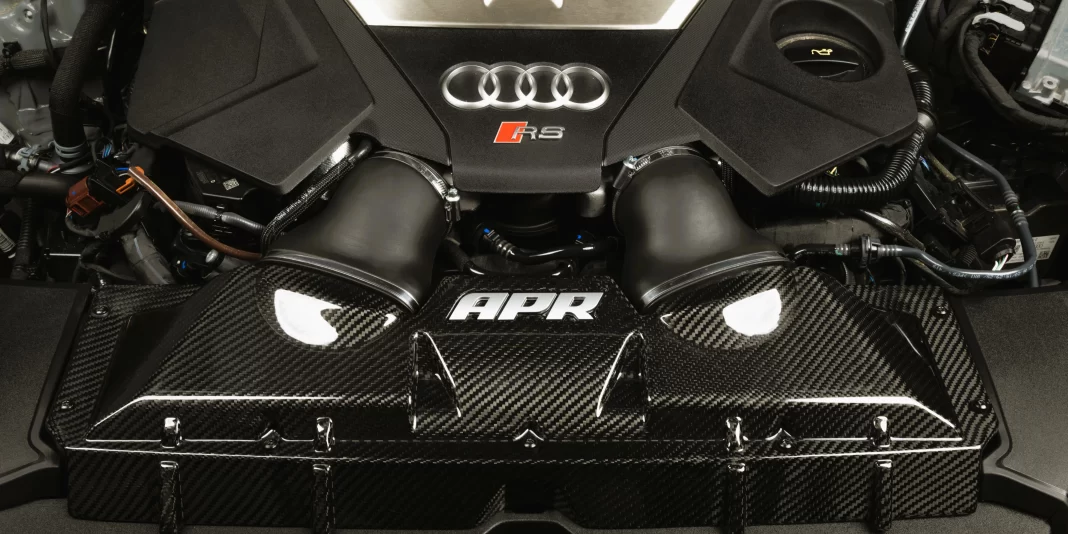4/4/2025
For many European-car enthusiasts and builders, a new air intake system is the first performance upgrade they’ll make to a stock vehicle. At the simplest level, an aftermarket air filter can help the engine to breathe better and deliver small improvements to power and throttle response – all at a similar cost to the OEM part, and for an installation that requires only a few minutes and no mechanical expertise.

Bigger gains can be made by replacing the entire system with a performance air intake kit from Holley brands APR (which serves models from Volkswagen, Audi, and other Volkswagen Group brands) and Dinan (a BMW and Mini specialist). In addition to the filter, these kits typically include the air box and a turbo inlet pipe, as well as the necessary clamps and rubber or silicone couplers.
To explore the advantages of these kits and get advice on how to choose the option that’s right for you, we spoke with Arin Ahnell, Holley’s European Vertical Product Director.
OEM vs performance air intake systems
Performance air intake kits typically make the system more free-flowing. One way to do this is to enlarge the piping diameter, from the air box all the way down to the turbo or throttle body, depending on whether the engine is turbocharged or naturally aspirated. Wider pipes lessen the pressure-drop before the air reaches the engine, ultimately increasing performance.
Shop Dinan BMW performance parts here.
Meanwhile OEM-spec paper air filters are necessarily thick and restrictive, to cater for drivers who don’t regularly maintain their cars. On some vehicles, the air filter maintenance interval can be close to 50,000 miles. Thick filters affect air flow to the engine. Aftermarket filters from APR and Dinan, however, are made from a washable material that’s also thinner, enabling more air to flow through the system, to improve performance and increase horsepower.
“There are several other reasons why aftermarket intake systems differ from factory parts,” says Ahnell. “Cars can become louder with a performance intake system. Regular drivers might not appreciate the intake growls from a modified naturally aspirated engine or the hisses and diverter-valve noises from an upgraded turbo motor, so factory air boxes tend to be fully enclosed and as sound-deadened as possible. But as a car enthusiast, I love those sounds!
“Factory intake systems are also designed to be easy to work on at a dealership,” he continues. “That’s why they always use a basic, plastic air box and why it houses a paper filter that the dealership can easily rip out and throw away. But as an enthusiast, you can have something more free-flowing that can be washed every 10,000 miles or so as part of regular vehicle maintenance.”

APR and Dinan replacement systems are often available in carbon fiber, which looks great when you pop the hood at a car show. Owners might also choose to leave the filter exposed, to further increases the air flow, whereas an OEM – catering to every customer in every scenario – will need to keep the casing sealed to protect against flood risk.
Performance air filters
Replacement air filters from APR and Dinan use a washable, pleated cotton-gauze material. The material is often oiled, as oiled filters typically allow for adequate filtration at greater flow rates. This is because the oil assists in trapping particles, rather than the filter relying completely on a thicker gauze material.
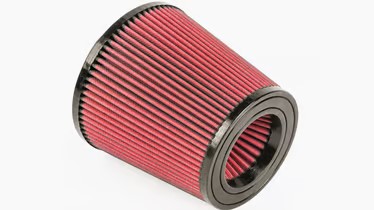

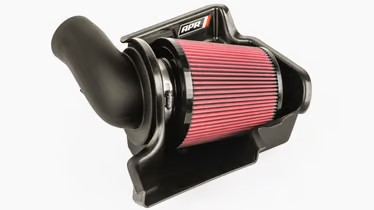
Depending on the application, two types of filters may be available. Panel filters drop into the factory location as a direct replacement, regardless of whether the customer also upgrades the housing and pipes, while cone filters form part of an aftermarket air box or heat shield that’s completely different to the factory setup.
“It really comes down to packaging,” Ahnell explains. “On the Porsche 911, for example, our system mimics the factory air filter, but everything else about it is completely changed. But on a Volkswagen GTI or Golf R, we have changed everything, including the filter and air box.”
Performance air intake pipes
Although the air filter is often the first element of the intake system that enthusiast owners want to upgrade, engineers at APR and Dinan have found that the intake piping is often the change that yields the biggest performance improvement.
“A lot of these systems have a very narrow pipe leading into the turbocharger, which could run for quite a distance,” Ahnell notes. “The air forms a boundary layer along the edges of the pipe, so the effective internal diameter narrows, resulting in a pressure drop at the turbocharger or throttle body. When that happens, you’re not getting as much air flow through the system as you should – much like when you’re driving at high altitude. When we increase that diameter on the intake system, the pressure drop remains closer to the ambient pressure outside of the vehicle. That means denser air through the system, which can lead to some pretty large power increases.”
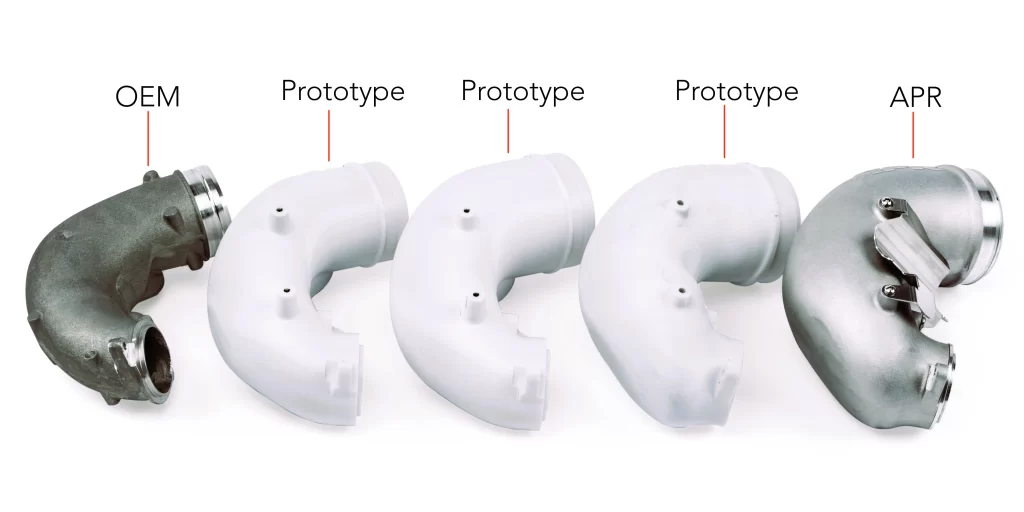
When developing a performance air intake system for the Audi RS3 and TT RS, APR engineers discovered that changing the air box only resulted in a very small power gain. But by changing the inlet to the turbocharger and the back pipe to the air box, the horsepower gain was substantial, so that setup became the Stage 1 intake system for those models.
How to choose a performance intake kit
As we’ve already mentioned, a replacement, high-flow, drop-in air filter is a great way to start upgrading a car’s intake system. Being washable and reusable, it should also last for the life of the vehicle, representing a cost saving in the long run.
The next step is a full intake system. In many cases, these come in both plastic and carbon fiber. Both will improve vehicle performance, for the reasons outlined above, so the choice mostly comes down to budget and whether aesthetic appeal is important to you.
Plastic systems are priced lower than the carbon-fiber alternatives, where offered, but as well bringing high-end looks, the carbon-fiber system can sometimes outperform the plastic system, depending on the application. One benefit of carbon fiber is its ability to withstand heat better than plastic.
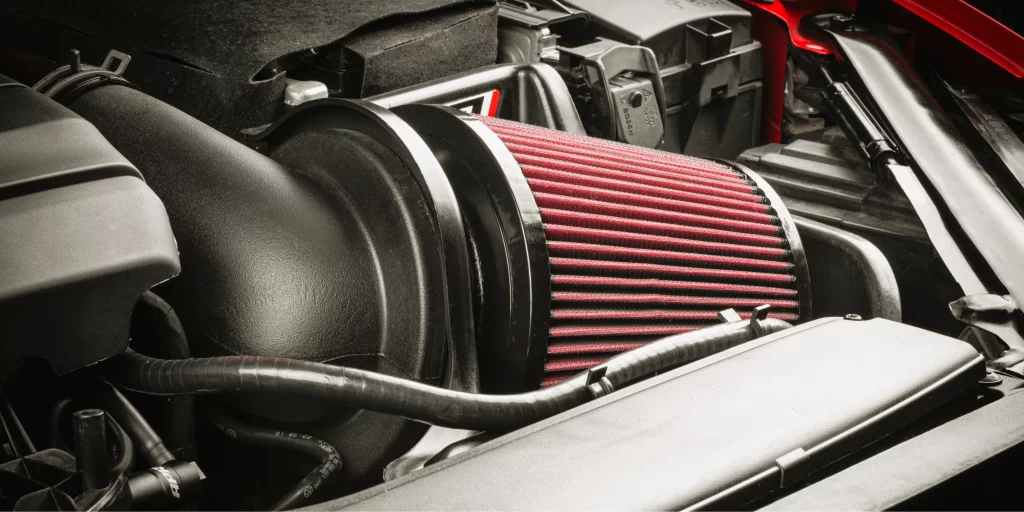
By way of example, check out these PEX and carbon-fiber open-intake kits for Volkswagen Group 1.8- and 2-liter EA888 engines, including those in the Mk7 and Mk8 VW GTIs, which are priced a couple of hundred dollars apart.
You can also mix and match materials, to suit your budget and priorities – whether they are improving your car’s sound, looks, or a combination of the two. The base APR intake system for the ’22-’24 Golf R and Audi S3 is open. If maximum noise is not a priority, it may be fitted with a cover that’s likewise made of plastic, or one that’s beautifully formed from carbon-fiber twill but costs almost four times as much as the plastic cover – more than the intake system itself.
Shop APR Volkswagen and Audi performance parts here.
Not every element of the intake system is available for every platform. Packaging constraints might mean that only an air box is available, for example, not larger pipes, as with some of the tightly packed BMW engine bays for which Dinan offers upgrades. Or perhaps it’s just the turbo inlet pipes and back pipes on offer, if that’s the element that will bring the biggest performance upgrade. For full details, check out the APR and Dinan websites.
How much extra power will an intake upgrade make?
Power gains vary based on the vehicle, engine platform and any other upgrade components installed.
For the EA888-powered Volkswagen GTI, the factory intake system only recorded 325 CFM in APR flow bench testing at a certain inlet depression. With APR’s performance intake system installed, the numbers jumped to around 690 CFM. On one of APR’s tuned test cars, a Mk8 Golf R, the increased flow led to a 15-horsepower gain on just the factory turbo.
Larger-diameter turbo inlet pipes will help an engine to make power, especially when a larger, aftermarket turbo is fitted. APR and Dinan intake systems make provision for different adapters on the back to increase the inlet pipe diameter, whichever turbo or throttle body is on the car.
In another test, an Audi RS6 V8 with a Stage 1 ECU upgrade was fitted with APR’s performance air filter, air box lid with larger outlets, and larger, cast inlets into the turbocharger. The result was a massive 47 additional all-wheel horsepower on the dyno. Ahnell says that much of the gain came from the turbo inlets, which are 93% larger than stock, leading to 50% less pressure-drop.
Happily, those performance gains do not come with a reliability penalty – in fact, quite the opposite can be true.
“We take these engines apart after hundreds of thousands of miles running our intake systems, and they look pristine inside,” he adds. “When a performance intake system is on a turbocharged engine, the turbo doesn’t have to spin as fast to get the same airflow levels. That lowers the turbo and exhaust-gas temperatures, so an intake system could even improve the life of the motor. You can also achieve slightly better fuel mileage, because the engine doesn’t have to work as hard to breathe.”
For 2025, APR is introducing an intake system for newer Audi RS3s and an update to all its 4-liter SUV intake systems for vehicles including the Audi SQ7 and RSQ8, Porsche Cayenne Turbo, and Lamborghini Urus. Like all existing APR and Dinan intake kits, these will come with install manuals that make them accessible to anyone, while a team of experts is always on hand to walk owners through any installation issues.
For more on performance air intakes, visit https://www.goapr.com/ or https://www.dinancars.com/.



